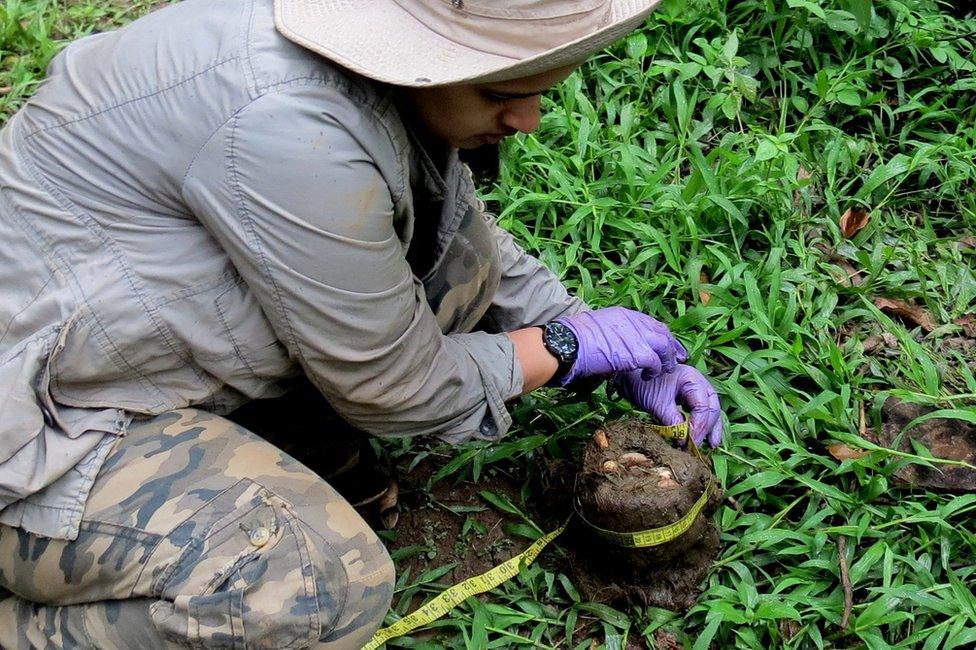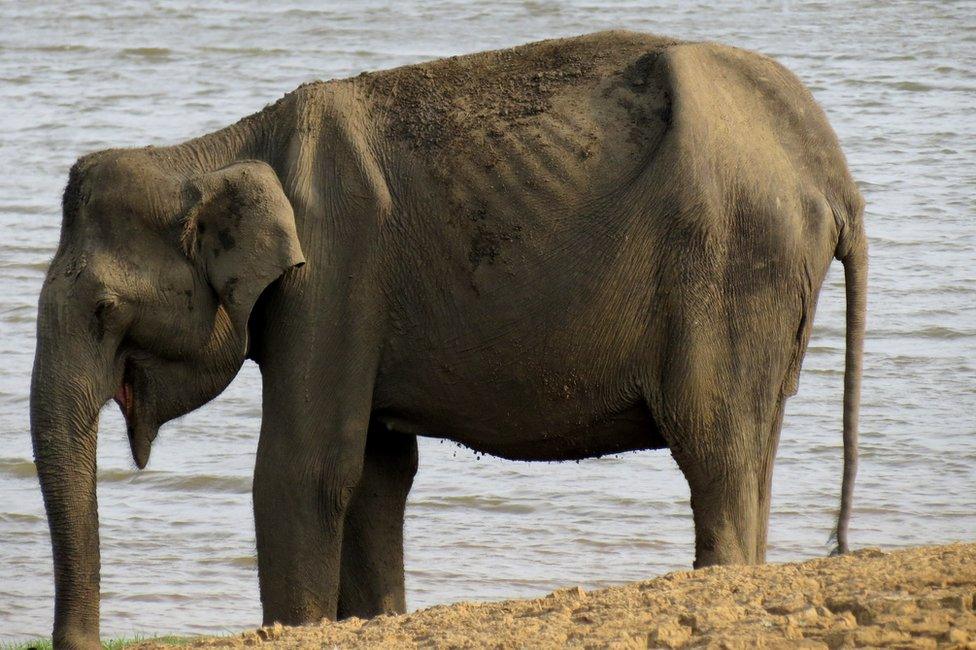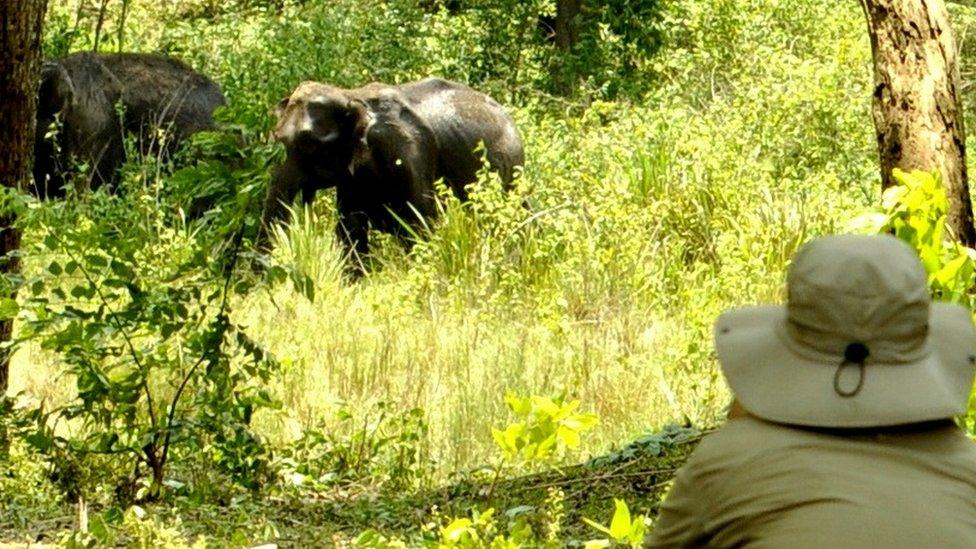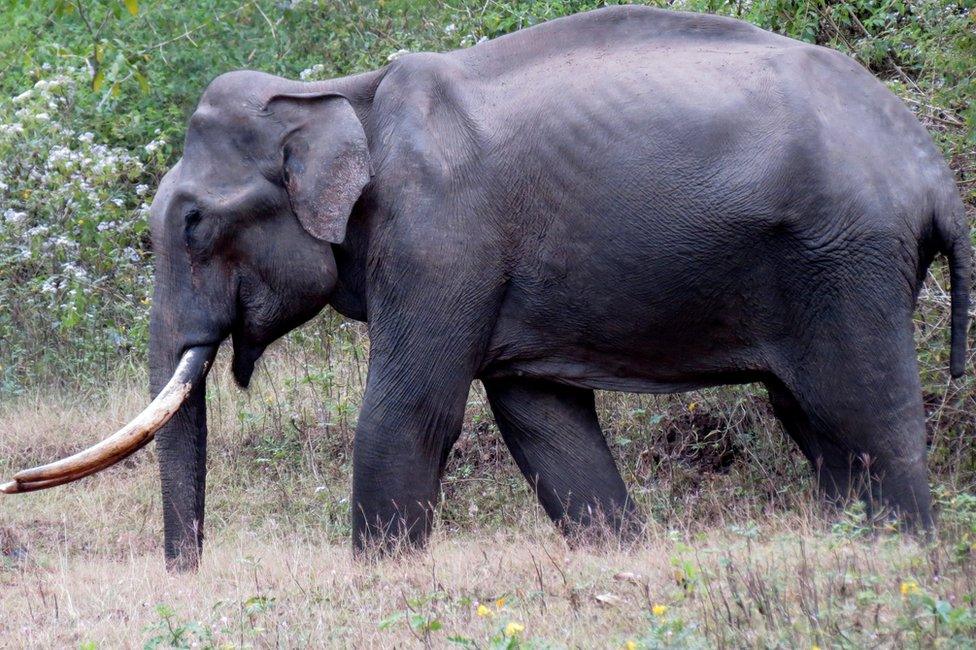Freeze-dried dung gives clue to Asian elephant stress
- Published

Researchers freeze-dried samples on site for later analysis
"Collecting fresh faecal samples is not as easy as it may sound," says researcher Sanjeeta Sharma Pokharel.
But her efforts have helped scientists in India devise a unique, non-invasive way to monitor the physiological health of wild elephants.
The key has been freeze-drying dung in the field to preserve the elephant's hormones.
As a result, scientists found stress levels in females were more conspicuous than in male elephants.
Over five years, Sanjeeta and her colleagues collected more than 300 samples from 261 elephants in the biodiversity-rich Western Ghats area.
She explained her technique: "I used to hide and observe till the elephant defecated and moved away."
She told the BBC: "These samples mean a lot to me."
Ethical approach
The aim of the research was to evaluate the influence of the elephants' body condition on glucocorticoid metabolites.
Animals such as elephants are subjected to various stressors in their lives, with factors including threats from predators, food shortages, drought and illness.

A female elephant in poor body condition. Females exhibited higher levels of stress hormones
Whenever any animal faces stressful events, their body secretes hormones known as glucocorticoids.
These hormones are released into the circulatory system which eventually breaks them down into metabolites that are excreted through urine or faeces.
The researchers say that collecting blood samples to assess stress levels is neither ethical nor feasible, since immobilising the animals will cause additional stress, thus biasing the study.
"So glucocorticoid was measured using faecal or dung samples," said Sanjeeta.

Researchers observed and followed the elephants until they defecated
The team found the glucocorticoid metabolites in the dung remained relatively stable up to six hours after defecation, though collecting samples as fresh as possible was preferred.
After six hours the dung starts to degrade through microbial activity. To prevent this, the collected samples were freeze-dried in the field and stored at -20 degrees Celsius for further analysis.
Ecological challenges
Stress levels for all elephants peaked during the dry season, when resources were low.
Senior researcher Prof Raman Sukumar said: "In a natural environment, large and long-ranging herbivorous mammals such as elephants may have to face various ecological challenges or stressful conditions.
"One such challenge that might impact their health is forage resource limitation, either in terms of quality or quantity."
Higher amounts of glucocorticoids generally indicated that the animal was more stressed, he said.
"Stress levels in female elephants were more conspicuous than in male elephants."
All mammalian systems would show a similar trend, the researchers say.

Elephants, like this male, showed higher levels of stress during the dry season
Dr Sukumar and his team claim that their study is the "first to examine the relationship between body condition, seasonality and stress in wild Asian elephants using large-scale faecal sample collection for assaying glucocorticoid metabolites".
The study also focused on finding possible answers to how elephant populations react to chronic stress and if superior nutrition from feeding on cultivated crops could help them reduce their physiological stress levels that may otherwise be enhanced through harassment by farmers trying to protect their fields.
They also examined the idea that body condition alone could act as an indicator of physiological health and fitness of an animal.
In the study, the animal's body condition was scored on a scale from one to five, with one indicating the animal was in a very poor state and five indicating the animal was obese.
The study conclusively found that the stress levels in the Asian elephants peaked during the dry season when resources were low. They also concluded that very poor or poor body condition was a good visual indicator of stress.
The research has been published, external in the Oxford Journal Conservation Physiology.